.
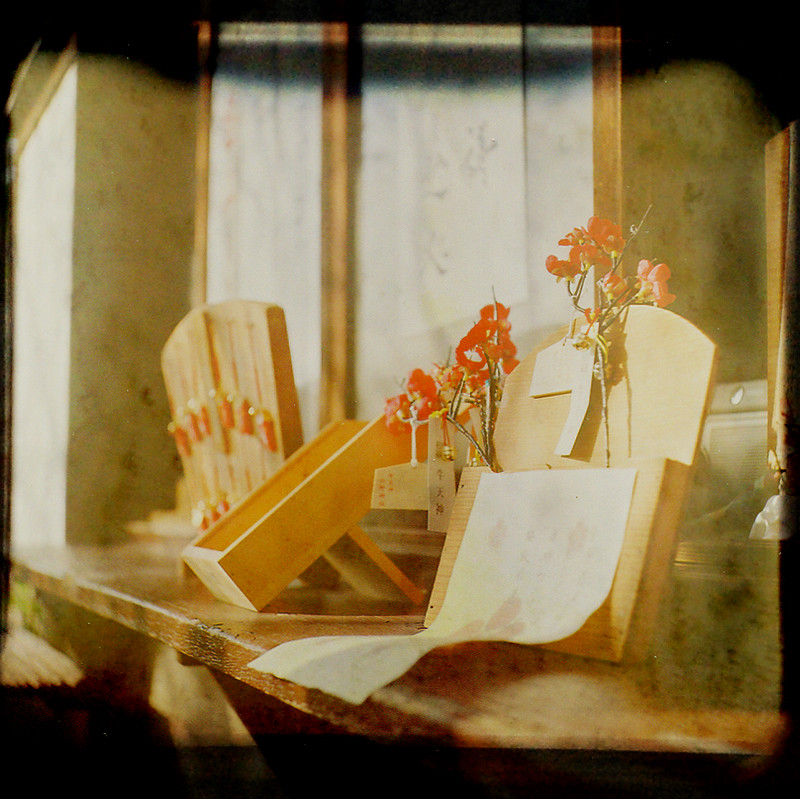
Lucky Charm TTV: photo by Marie Wintzer, 7 March 2011
I am not a painter, I am a poet.
Why? I think I would rather be
a painter, but I am not. Well,
for instance, Mike Goldberg
is starting a painting. I drop in.
"Sit down and have a drink" he
says. I drink; we drink. I look
up. "You have SARDINES in it."
"Yes, it needed something there."
"Oh." I go and the days go by
and I drop in again. The painting
is going on, and I go, and the days
go by. I drop in. The painting is
finished. "Where's SARDINES?"
All that's left is just
letters, "It was too much," Mike says.
But me? One day I am thinking of
a color: orange. I write a line
about orange. Pretty soon it is a
whole page of words, not lines.
Then another page. There should be
so much more, not of orange, of
words, of how terrible orange is
and life. Days go by. It is even in
prose, I am a real poet. My poem
is finished and I haven't mentioned
orange yet. It's twelve poems, I call
it ORANGES. And one day in a gallery
I see Mike's painting, called SARDINES.
Frank O'Hara (1926-1966): Why I Am Not a Painter, 1956

Sardines: Michael Goldberg (1924-2007), 1955, oil and adhesive tape on canvas, 205.1 x 167.7 cm (Smithsonian American Art Museum)
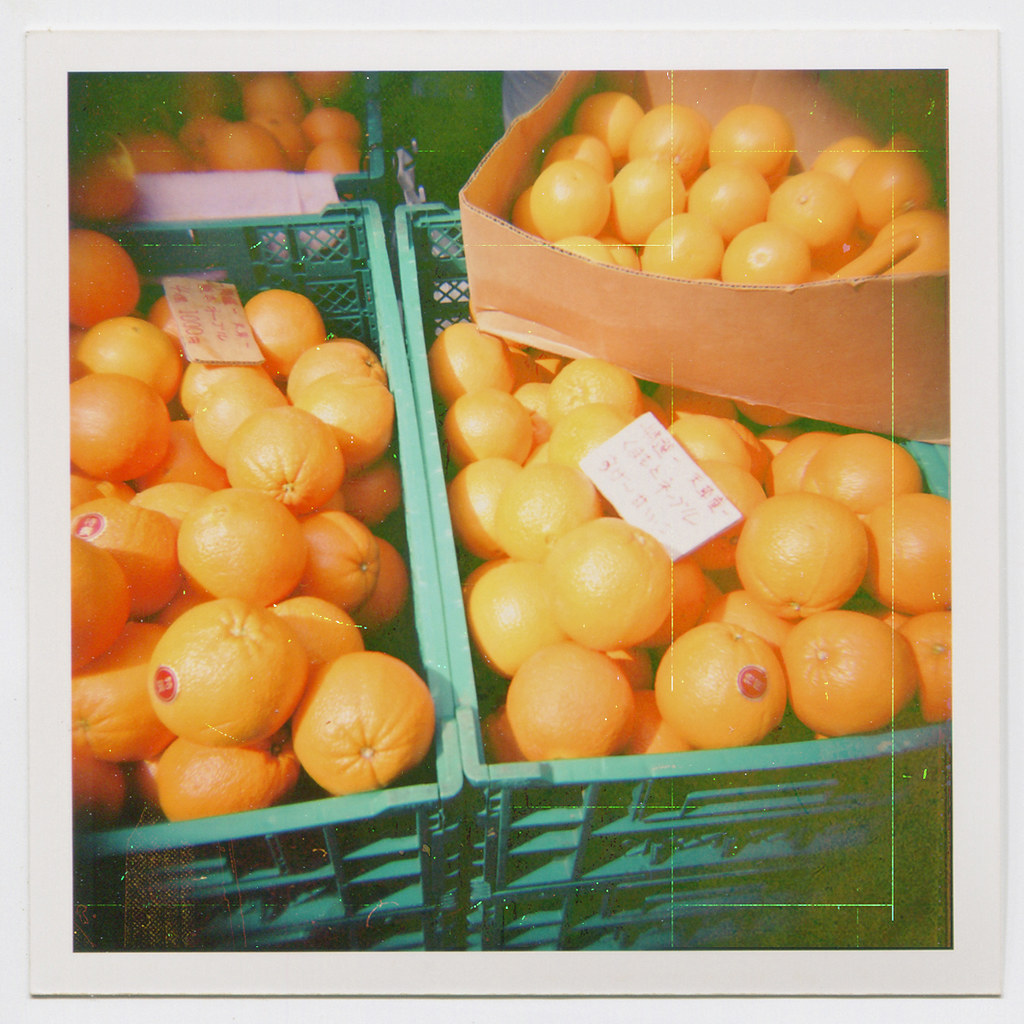
Le monde est bleu comme toi (Holga toy camera and texture by Les Brumes): photo by Marie Wintzer, 11 October 2011
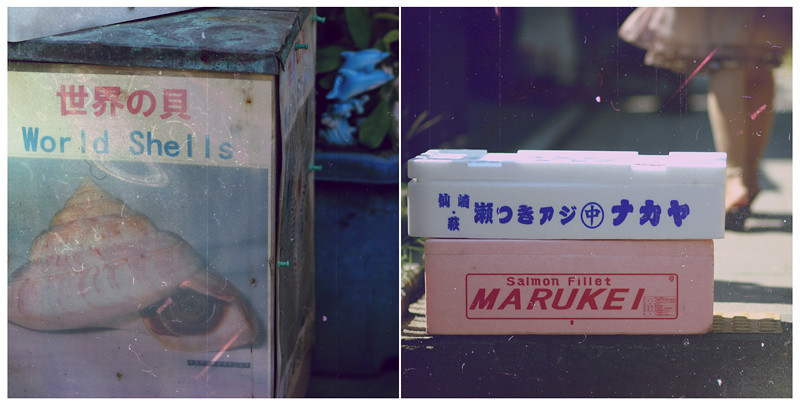
Shells, mackerel and salmon, Enoshima Island, August 2010: diptych by Marie Wintzer, 22 September 2010
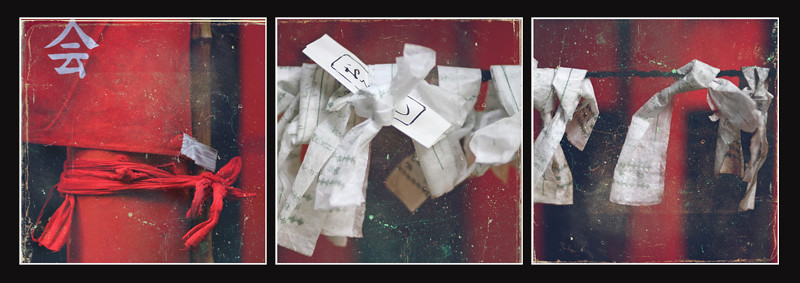
Une histoire de noeuds: triptych by Marie Wintzer, 6 August 2010
En rangs d'oignon
Noeuds papillon
En rangs serrés
À dénouer
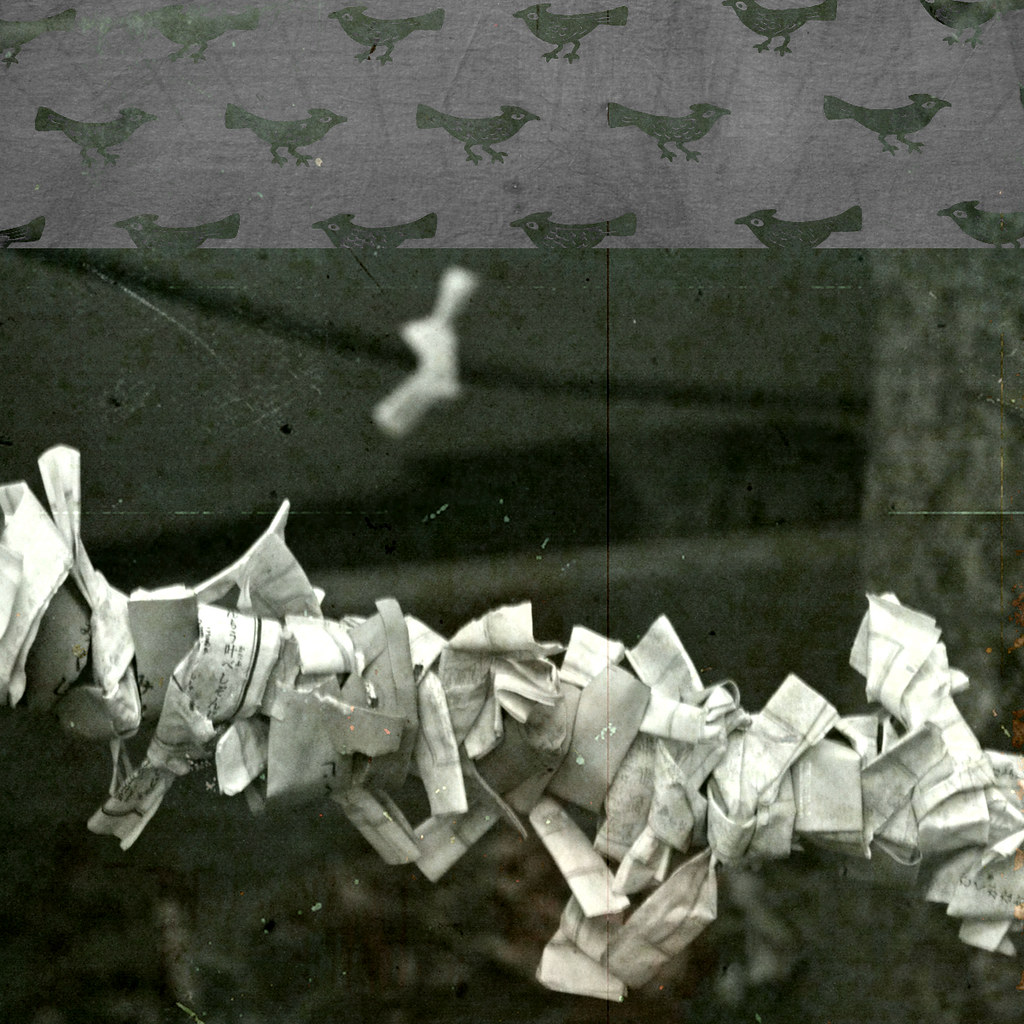
A Line -- II: textured photo by Marie Wintzer, 3 November 2008
-- A cable, rope, string, cord, or wire -- A rope used aboard a ship -- A fishing line -- A clothesline -- A cord or tape used, as by builders or surveyors, for measuring, leveling, or straightening -- A course of progress or movement; a route -- A horizontal row of printed or written words or symbols -- A unit of verse ending in a visual or typographic break and generally characterized by its length and meter -- Glib or insincere talk, usually intended to deceive or impress --

Drink this baby: textured photo by Marie Wintzer, 22 August 2010
Drink this baby, it's atomic soda
It'll blow your mind back to how it was
It'll blow your mind back to how it was
(Babybird -- Ugly Beautiful)
The song referred to in the title of Marie's great photo at the bottom of the post:
ReplyDeleteAtomic Soda: Babybird (from Ugly Beautiful, 1996)
Mike Goldberg, terrific painter, generous friend.
When Angelica and I were out getting a marriage license one day in March 1968, my grungy little Lower East Side apartment was ransacked by the downstairs neighbour junkies, who came up the fire escape. We had nowhere to stay. Mike had a camp bed in his studio on the Bowery. He lent us that. At our wedding, he sang "I Love You Truly", in a deep rich baritone. Many thanks, Mike.
love the photos...and the poem with its twist...
ReplyDeleteI still laugh when I get to the end of "Why I Am Not a Painter." The poem is so dense with information and story, yet so open in its movement at the same time. (BTW, I immediately read your comment as a perfect little poem itself & started breaking it into lines in my mind.)
ReplyDeleteThese words and images play very well together.
ReplyDeleteWhen younger, I wanted to be a painter, went to art school, worked hard but found myself painting the same thing day by day.
Goldberg paints living paintings, of course. Even in a photo you can just about hear the surface breathe.
The conversation caught here: two friends saying ostensively small things, nothing extra, no gobshite nonsense. And Frank having a quiet pop at himself and the poet breed: "It's twelve poems, I call it ORANGES."
Marie's last image with the shadow on the screen.
Mike's painting
ReplyDeleteFrank O'Hara's poem
all of these intersections ....
I got tears in my eyes...
the painting (always) is
what the paint does
the poem is (always) what the
words do.
I was in Manhattan in 1968/69 too.
Fay's cold-water flat 2nd Street and Second Avenue
bars on the window (one window over-looking the street
a steel door with three locks and an inside iron pole
against
same junkies two flights down
you know
when you are stuck in a painting
or in a poem and don't know which
way the damn thing is going jus
put a sardine in there
put an orange in
or
as Milt Resnick suggested
and did
put a snake in
put "it" in
take "it" out
take"it" out
put "it" in
then?
wait and watch
for something
(a title?)
to happen
something
always
does
1968 ? I wonder what Fay is doing
& with whom
those junkies were her friends .... they wrote poems... they painted paintings
hey, thanks Tee See
Wonderful poem, one of my favorites, Luminous paintings. Thanks.
ReplyDeleteLove this.
ReplyDeleteThat's my favorite O'Hara poem.
Ed sure has it with "all these intersections.../I got tears in my eyes." Open-ended as it might be, I always fancied Marie was addressing the poetic line specifically in "A Line," and you have that curious line about prose in the O'Hara poem. Does he question his own poetics?
ReplyDeleteThanks for the link to "Atomic Soda." I didn't know where she got that until now. I think it turned up in her work during her relocation to Hiroshima after the Tokyo reactor disaster. That terrible ordeal did, at least, produce some very fine work.
Equally wonderful for someone (like me), with no previous knowledge of these people or places, only knowing the O'Hara poem vaguely in the past, to come upon this game of words and images. It all stands up so beautifully: O'Hara, Goldberg, Wintzer - and Clark, the conductor.
ReplyDeleteOooh, waking up to the music of THIS symphony! How can it ever get better than this for me? Thank you so much, Tom! Marie and Frank O'Hara and Michael Goldberg in the same painting on Beyond the Pale, oh my, eyes are being rubbed right now. But yes, it seems to be true!
ReplyDeleteExit Sardines. Got to love this poem, Tom, your conducting skills know no borders. I am not a poet, I make mice dance. I think I would rather be a poet :-)
And you invited Babybird to the party, I couldn't be happier. He is one of my favourites. Dead Bird Sings on Jools Holland makes shivers run down my spine.
As ever, thank you (so muchly) for the music, Tom.
Delicious--every last one of these hmm--photos, oranges, sardines--not to mention Frank's poem.
ReplyDeleteTom,
ReplyDeleteOne day I am thinking of
a color: orange.
-- and there they are, in Marie's green boxes (beautiful photos). I was in the Tibor de Nagy on Saturday, show called "Jane Freilicher / Painter Among Poets," with all kinds of memorabilia (letters, postcards, manuscripts) from and to FO'H, JA, et. alia, including this line from one of Frank's postcards to her: "Life would be so much simpler if it could be entirely spent in visiting places."
5.12
light coming into sky above still dark
wall, bird beginning to call on branch
in foreground, sound of cars in street
order to be what it is, act
of ‘flux’ as movement
that following these, would
picture “is,” element
cloud moving toward corner of building,
sunlit green leaves on branch below it
Many thanks to all for terrific comments.
ReplyDeleteThis post is in many ways an illustration of the aesthetic principle (!!) upon which this blog is founded.
Really it all began in a bit of eavesdropping. That idle pastime of the superfluous.
So there we were, in Athens.
(Here comes the gossip bit, what celebrity-memoir poetry blogging is supposed to be all about!)
Socrates was saying, "You know, Phaedrus, that is the strange thing about writing, which makes it truly correspond to painting.
"The painter's products stand before us as though they were alive, but if you question them, they maintain a most majestic silence.
"It is the same with written words; they seem to talk to you as if they were intelligent, but if you ask them anything about what they say, from a desire to be instructed, they go on telling you just the same thing forever."
"Hmm," said Phaedrus. "In that case, perhaps someone ought to introduce them to one another."
"That's exactly the idea," said Socrates.
"It's possible they might have some interesting things to say to each other, then?"
"Yes. Let's make ourselves small, conceal ourselves behind this column, open our ears, and learn what we can!"
This has been a fantastic blog and comment thread, Tom. I will come back to it many more times.
ReplyDeleteIs it possible that the silent paintings and writings are questioning US?
What a present this has been, and still is.
Marie,
ReplyDeleteThat's a beautiful way to think of it. The words and pictures are here to speak not to each other, but to us. These are gifts. The best gifts change lives. The work of proper receptiveness however must always be up to the recipients. The first step in that work is to be grateful.
Thank you!